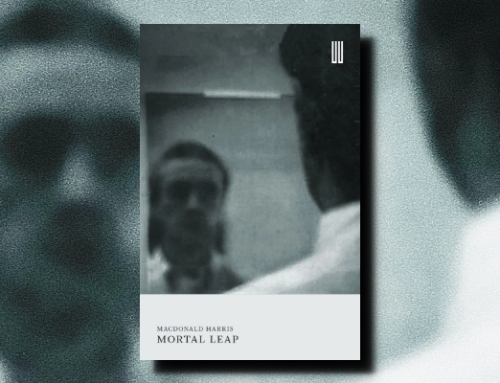Slow Man by J.M. Coetzee (2005) Penguin (2006) 272 pp
Over the past year I have been acquiring everything I can by J.M. Coetzee, and I’m planning on spending the next year getting through it all. I’ve read only four of his books (three reviewed here: Life and Times of Michael K, Foe, and Disgrace), but each one was strong enough (and disturbing enough) that I am convinced everything he writes is worth some time. They are also usually quite strange: they begin with an ordinary enough premise, but Coetzee warps it around into something different. Slow Man is no exception.
The book begins with Coetzee’s masterful, direct prose describing a bike wreck in Adelaide, Australia:
The blow catches him from the right, sharp and surprising and painful, like a bolt of electricity, lifting him up off the bicycle. Relax! he tells himself as he flies through the air (flies through the air with the greatest of ease!), and indeed he can feel his limbs go obediently slack. Like a cat he tells himself: roll, then spring to your feet, ready for what comes next. The unusual word limber or limbre is on the horizon too.
That is not quite as it turns out, however. Whether because his legs disobey or because he is for a moment stunned (he hears rather than feels the impact of his skull on the bitumen, distant, wooden, like a mallet-blow), he does not spring to his feet at all, but on the contrary slides metre after metre, on and on, until he is quite lulled by the sliding.
The unfortunate person on the bike is Paul Rayment. He was simply riding his bike to the market when, well, a blow catches him from the right. He has been hit by a car driven by the young Wayne Bright or Blight, we’re never sure which. The way Coetzee describes this action from the point of view of a man in shock who thinks he will be able to get through this problem with just a bit of acrobatics is fantastic. And that Rayment is “quite lulled by the sliding” is just the kind of unexpected but perfect detail I like from Coetzee.
Rayment is getting old. If he were a younger man, the doctors may have tried to reconstruct the knee that was pulverized in the accident; however, since recovery can take years of surgery and therapy, the doctors opt to amputate. This brings thoughts of suicide, but not exactly in the simple way we might expect; Coetzee plays with Rayment’s motives:
He is convinced that he would put an end to himself it he could, right now. Yet at the same time that he thinks this thought he knows he will do no such thing. It is only the pain, and the dragging, sleepless nights in this hospital, this zone of humiliation with no place to hide from the pitiless gaze of the young, that make him wish for death.
When Rayment is released from the hospital, he is tended to in his home by a nurse whom he hates, as nice as she is. He finally gets a nurse named Marijana, an immigrant from Croatia. He dreams of having a romance with her. When he knows that is not possible, as she is completely faithful to her husband, he dreams of being a benefactor who, because of his pure love towards her, takes care of her and her children.
The story is developing interestingly. And then, out of the blue, Elizabeth Costello arrives at Rayment’s door. For readers who don’t know, Elizabeth Costello is a fictional character Coetzee has used before. Coetzee uses her as a stand-in for himself, similar, in some ways, to how Philip Roth uses Nathan Zuckerman. Having read a good portion of Slow Man, the arrival of “the author” completely surprised me.
When she arrives, she recites some of the lines from the early pages of Slow Man, and says:
‘Do you know what I asked myself when I heard those words for the first time, Mr Rayment? I asked myself, Why do I need this man? Why not let him be, coasting along peacefully on his bicycle, oblivious of Wayne Bright or Blight, let us call him Blight, roaring up from behind to blight his life and land him first in hospital and then back in this flat with its inconvenient stairs? Who is Paul Rayment to me?
Indeed, why do any of us care about the story of Paul Rayment, the old man who loses his leg and then falls for his nurse. As much as I value Coetzee’s prose (and despite how much I was enjoying the book before the appearance of Miss Costello), when I step back and think about it, I agree with Miss Costello when she says:
Two a penny, Mr Rayment, stories like that are two a penny. You will have to make a stronger case for yourself.
Needless to say at this point, Slow Man becomes something completely different than what it at first appeared. Impressively, though, Coetzee doesn’t allow his story to become entirely metaphysical and metafictional; he continues to tell us Rayment’s story with Marijana even as Miss Costello makes an unwelcome guest in his house. Miss Costello comments on Rayment’s action and inaction. They are stuck together for the time being, and she’d rather he get on with his story so she can be rid of him and he of her.
There are several things going on here — any list would be reductive and do a disservice. However, I would like to comment on one of my favorite threads: the idea of an author and his or her subject growing old together. Elizabeth Costello is no young woman. She is awkward with age, and she is tired, just as Rayment is. Indeed, at least Rayment has Marijana to fawn after. As Coetzee enters his later years, Slow Man is a touching and sometimes blunt look at searching for meaning in old age.
As I mentioned earlier, reading Coetzee is, for me, always an interesting mixture of delight and frustration. I cannot put his books down because the writing is so incredibly good, and yet throughout I find myself wondering just how much I’m enjoying going where Coetzee is taking me. Then I finish and the books begin the process of aging in my mind. All of his books that I’ve read age so well. Slow Man is proving to be no different — I highly recommend it.









Coetzee is hard work, I find, but worth it. I never quite know if I’ve ‘got it’ or if I’ve been led up the garden path, but the journey is always interesting!
I stopped by to leave a comment quite similar to Lisa’s! My first exposure to Coetzee was Elizabeth Costello, which didn’t grab me at all. But I really liked Disgrace and Michael K, thus reversing my first impressions of Coetzee. Your review makes me want to try Slow Man as well.
A Coetzee year: that sounds amazing. I’ve only read Disgrace, but that alone urged me to gather up a few others as well.
My reaction to Coetzee’s novels is similar, it is always on reflection that they mature and ripen. This year I read his three “fictional” memoirs and can recommend them highly, particularly in a back-to-back reading.
[…] like that are two a penny . You will have to make a stronger case for yourself. Excerpt from: JM Coetzee: Slow Man Comments […]
I think I made the mistake of reading “Slow Man” as my first Coetzee book. I started reading it in a bookstore on a whim and was hooked. Except then I just started getting more and more confused – especially with the arrival of Elizabeth Costello. I enjoyed the book thoroughly (even after realizing that there was some clever writing in reference to Elizabeth Costello, which I have yet to read), but it was not the best introduction to an author I’m quite enjoying getting to know…
Hi everyone, and thanks for your comments. I have been on holiday so I have been neglecting things here.
Biblio, you seem to have encapsulated a common theme here: Coetzee’s late work involving Elizabeth Costello in any capacity is probably not the best place to start, even if the fantastic beginnings hook you. Still, Coetzee is certainly an author worth getting to know.
I’ve set about to acquire all of Coetzee’s catalog as well, Trevor. As someone said earlier, I’d highly recommend the set of “fictional memoirs” (Boyhood, Youth, Summertime). My local library has filed Boyhood in the autobiography section, but I think they’re wrong. Just because the character’s name is John Coetzee in all three does not mean they are not fiction. It’s quite playful of him and I like that. They are also all three quite different from each other, and I like that too.
As for Slow Man, I liked it but wonder whether I should have read Elizabeth Costello first (I’ll see when I get around to reading it!)
I’ve started to read Coetzee in the last couple of years and it’s been well worth.
So far, I’ve read Disgrace, Michael K, Waiting for the Barbarians and the Boyhood, Youth, Summertime trilogy.
I do like his later work a bit better. I like it all but Michael K and Waiting for The Barbarians which are fables of a sort didn’t resonate with me as well.
Disgrace is my favorite of those I’ve read but I though Boyhood, Youth and Summertime were excellent with Summertime being my favorite of the three.
I’m not sure which one to read next, Rick. I have them all now, and have read Michael K, Waiting for the Barbarians, Foe, Disgrace, and Slow Man. I may reread Waiting for the Barbarians since it was my first Coetzee and I read it well before I started this blog. I remember quite liking it, and I really liked Michael K. So I guess it will be interesting for me to see whether I’m more a fan of early Coetzee or late Coetzee. I think I’m probably both, as I am with Cormac McCarthy, though I recognize a change in the periods.